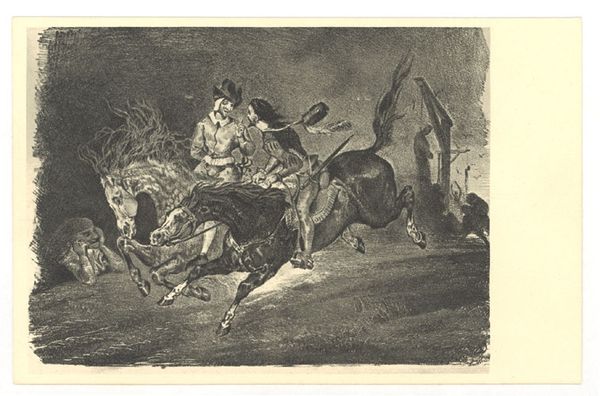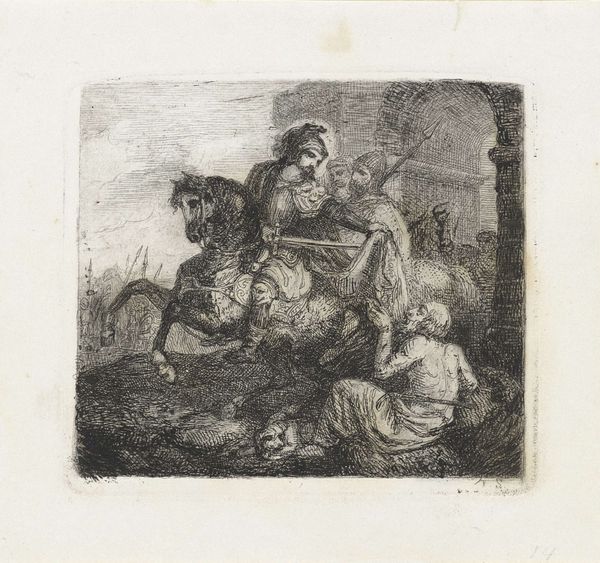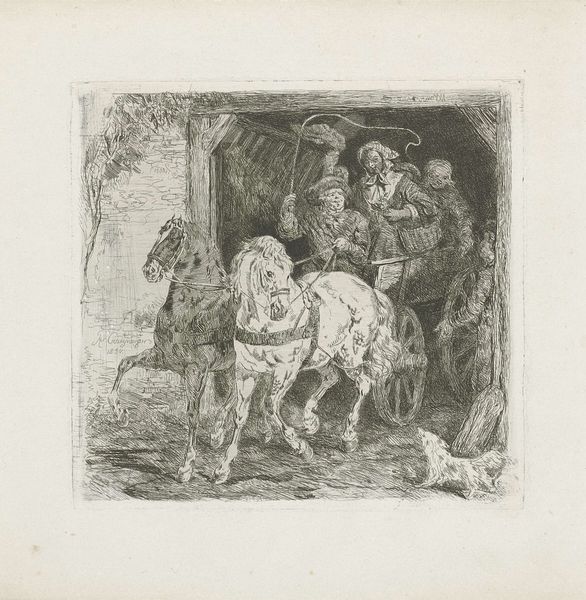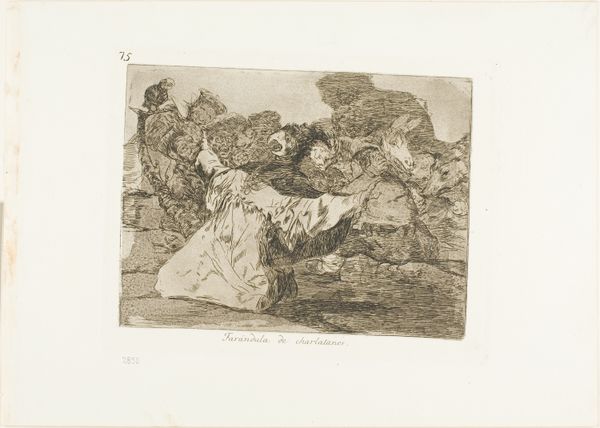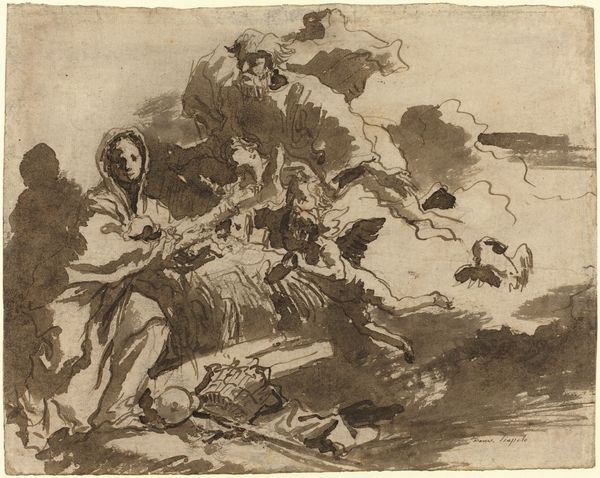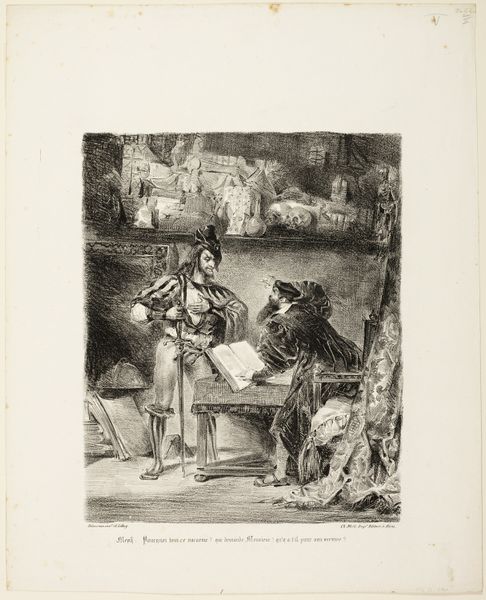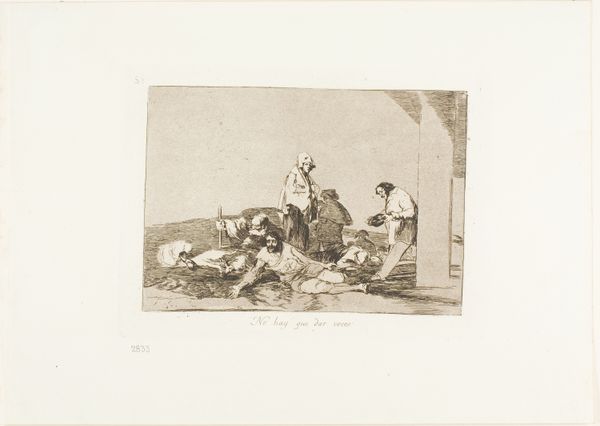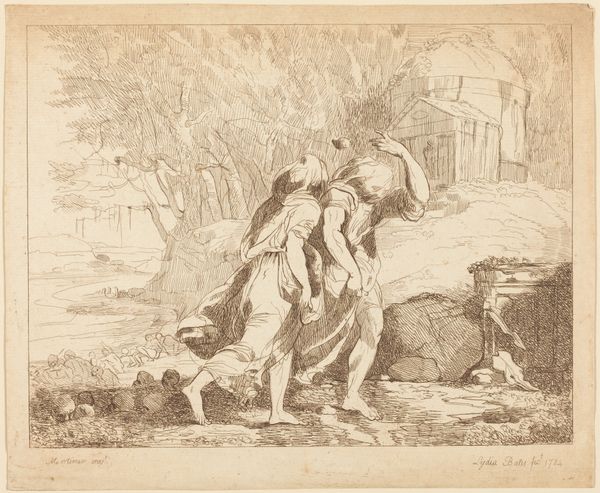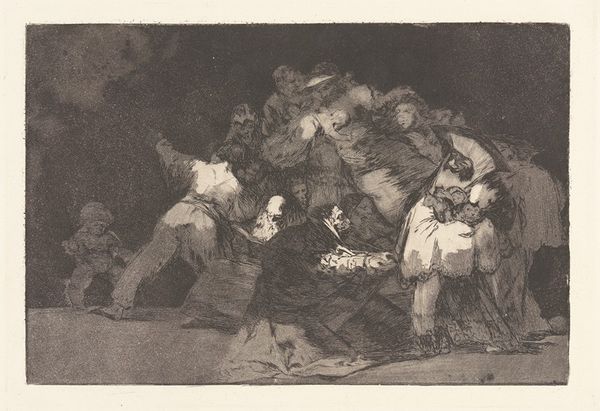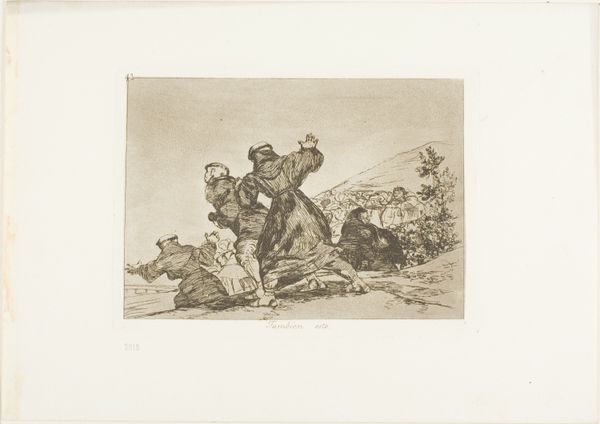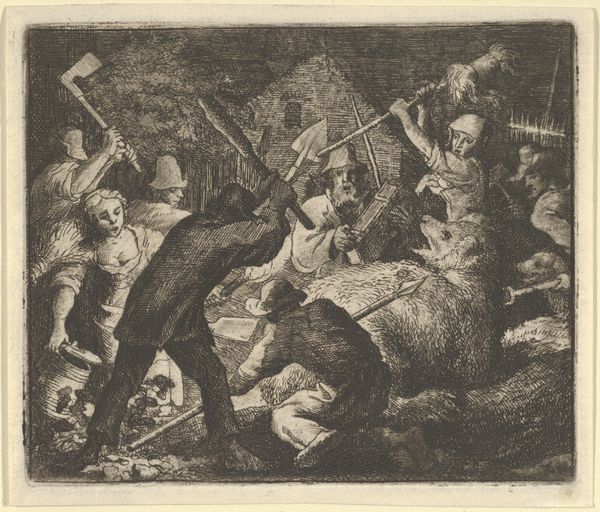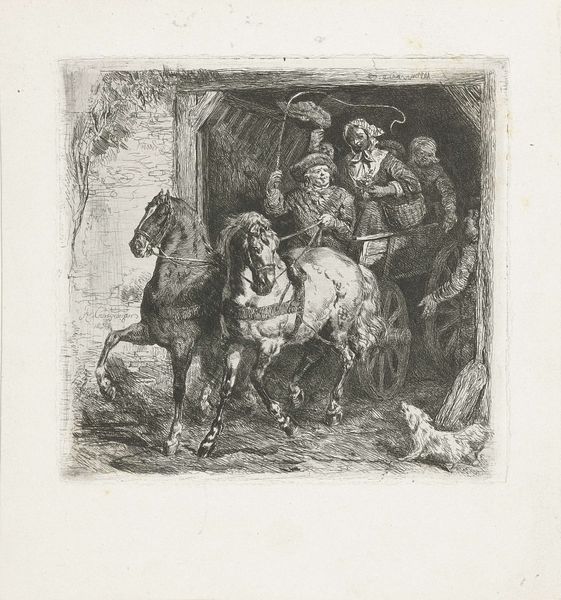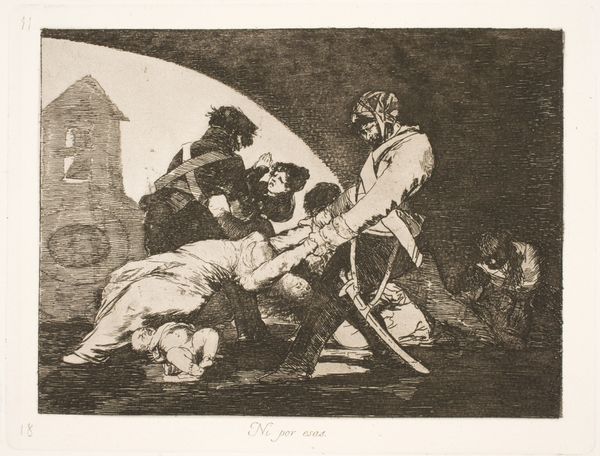
Faust and Mephistopheles Galloping Through the Night of the Witches' Sabbath 1828
0:00
0:00
drawing, lithograph, print, paper, pencil
#
drawing
#
narrative-art
#
lithograph
# print
#
figuration
#
paper
#
pencil drawing
#
romanticism
#
pencil
#
history-painting
Dimensions: 210 × 285 mm (image); 260 × 400 mm (sheet)
Copyright: Public Domain
Editor: This is Eugène Delacroix's "Faust and Mephistopheles Galloping Through the Night of the Witches' Sabbath," a lithograph from 1828. There's such a frantic, energetic feeling here. I'm struck by the way the horses seem barely contained, wild almost. How do you interpret this work, especially considering its historical context? Curator: It's interesting that you pick up on that energy. Delacroix created this during a period of significant social upheaval, when the Enlightenment's rationalism was being challenged by a rising tide of Romanticism. What we see here isn't simply an illustration of Goethe's "Faust", but also a reflection of broader anxieties surrounding established orders. The unchecked power, the barely-contained chaos – these are potent symbols, especially considering the period’s rigid social structures and anxieties around authority. Can we read Mephistopheles’ ride through the night as a challenge to norms and a potential metaphor for the social changes percolating at the time? Editor: That's fascinating. I hadn’t considered the connection to social anxieties, but it makes sense. So, this wild ride could be seen as a commentary on challenging established structures, rather than just a depiction of a scene from "Faust"? Curator: Precisely. Think about the witches' sabbath itself: traditionally, it's a space where social hierarchies are inverted, where transgression and the overturning of moral codes reign. By choosing this subject, Delacroix is engaging with themes of power, subversion, and the destabilizing of norms. And how that representation may reflect the disquiet surrounding the traditional seats of power in Europe during the late 1820's. The period saw, through revolutions in France, questions over the sources, means, and ends of authority which found ways to reflect back on prior history and narrative. Do you think that the relatively unpolished state of the print also serves that spirit? Editor: It definitely adds to the chaotic feel, it enhances that impression of 'barely contained chaos'. I see how Delacroix used this scene to speak to much larger, more relevant ideas around authority, power, and social unrest during that era. Curator: Exactly, and in viewing these older works through our present experience we can look into where similar unrest is occurring, how norms are shifting, and who gets to have power in society.
Comments
No comments
Be the first to comment and join the conversation on the ultimate creative platform.
